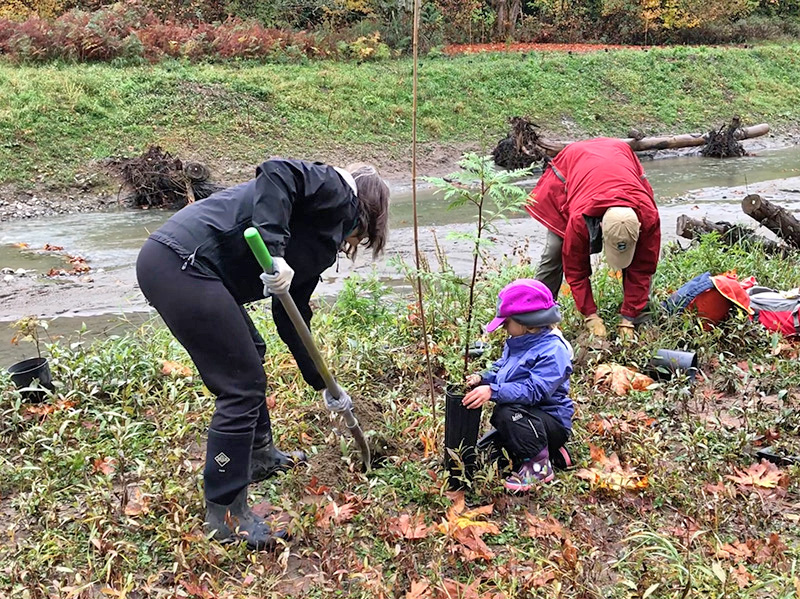
Volunteers help to plant trees along the banks of a Skagit Valley stream.
When you think of protecting water quality, the first thing that might come to mind is preventing spills of oil, toxic chemicals, or sewage. You might think of cleaning up dirty water, or picking up garbage in a stream.
However, like many water bodies in the state, some streams in the Skagit Valley are facing a threat that’s harder to see: increasingly warm water. During the summer months, several Skagit streams are reaching temperatures that are deadly for fish and other aquatic life.
Keeping streams cold is crucial to protecting salmon and the many species that depend on them, including resident orcas. According to the Washington Department of Fish and Wildlife, salmon are a food source for other fish, birds such as bald eagles and ospreys, mammals such as river otters and seals, and many others. And resident orcas are very dependent on salmon. Scientists from the National Oceanic and Atmospheric Administration say that chinook salmon in particular make up between 50% and 100% of resident orcas’ diets, depending on the season.
Did you know?
To help raise awareness of Skagit Valley’s warming waters, we’ve created a series of four educational videos that describe the problem and present solutions through stories from the Skagit Valley community.
Video #1 - Keeping Skagit Valley wild and cool: The impact of warm streams
Learn more about the water temperature problem and how it threatens the wild nature of Skagit Valley.
Video #2 - Keeping Skagit Valley wild and cool: How to keep streams cool
Learn about some of the solutions to address water temperature problems, and how everybody can take action to help.
Video #3 - Keeping Skagit Valley wild and cool: Landowner stories and solutions
Hear stories from Skagit streamside landowners who are taking action to protect the water and wildlife on their land.
Video #4 - Keeping Skagit Valley wild and cool: How farmers are helping
Hear stories from Skagit farmers who are using local resources to steward their land and protect the water that runs through it.
Everybody can help
Luckily, there are solutions and resources available to help combat the warm stream water problem, both in the Skagit Valley and across the state. One effective strategy is to plant native trees and shrubs alongside streams to provide protective shade over time.
You don’t have to own land to make a difference. Attend a local volunteer event to plant trees next to streams in your community, or help install a local rain garden, which can help increase groundwater flow to streams during the dry summer months.
Want to learn more?
Visit our storymap for more information about Skagit Valley’s warming waters and the resources available to landowners and the community.

